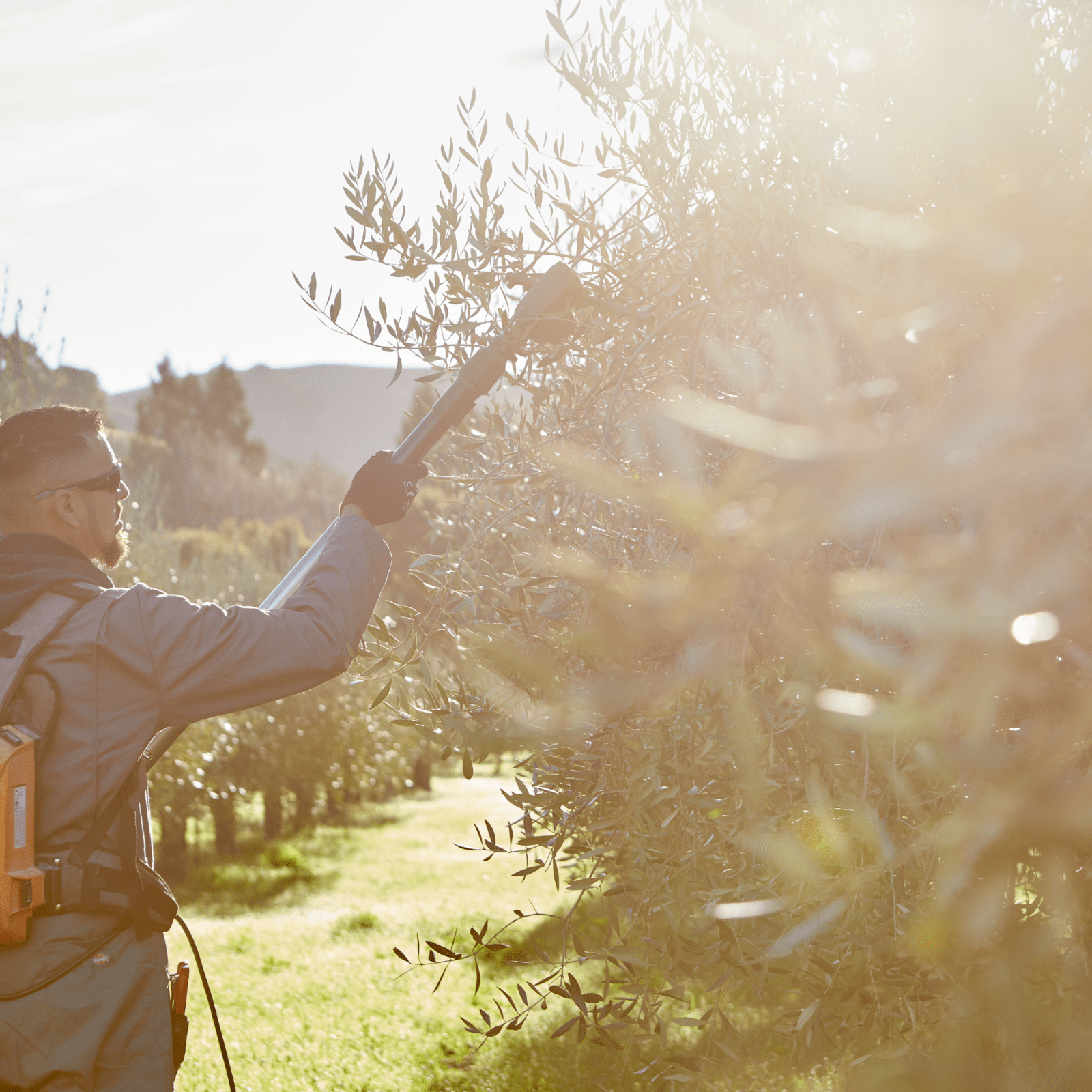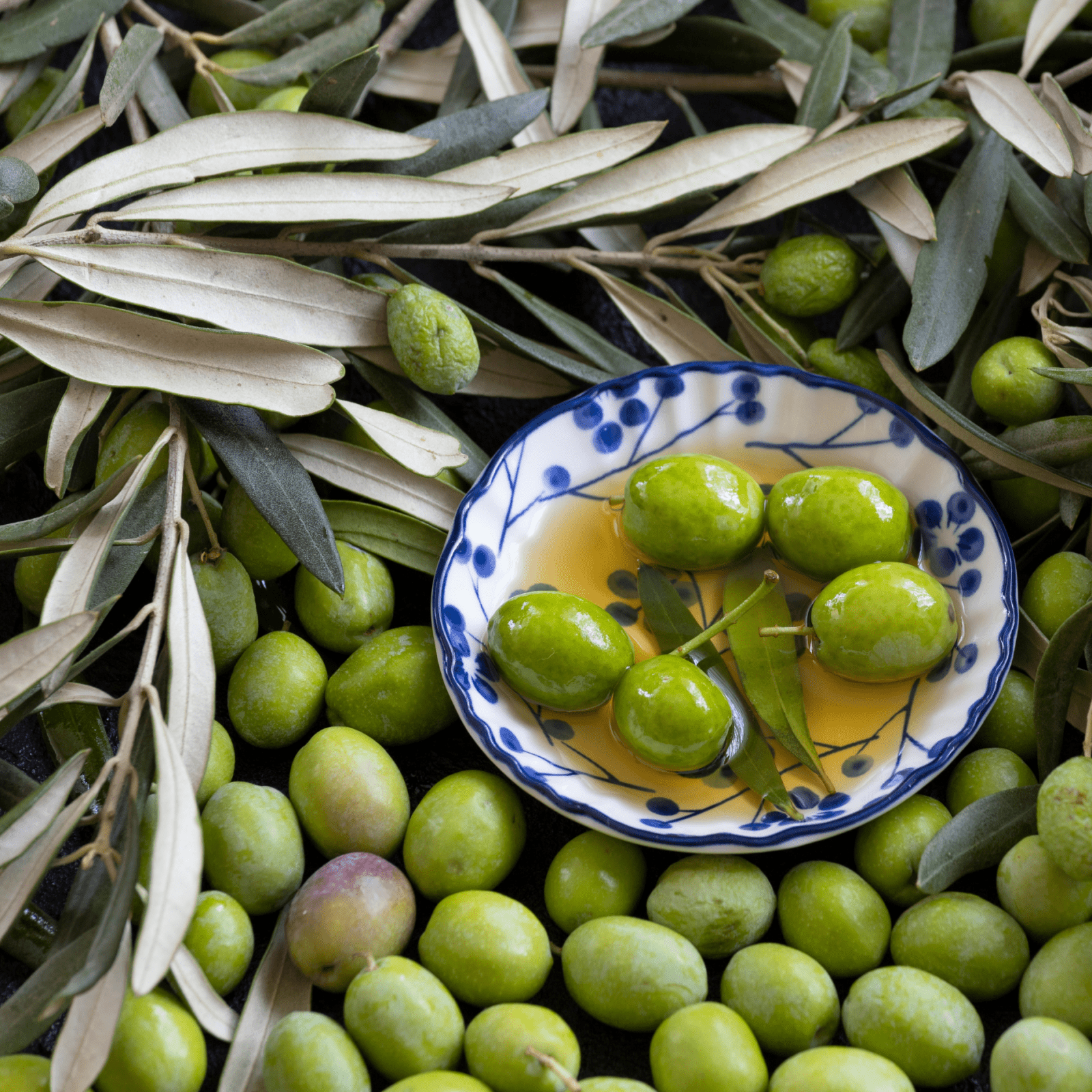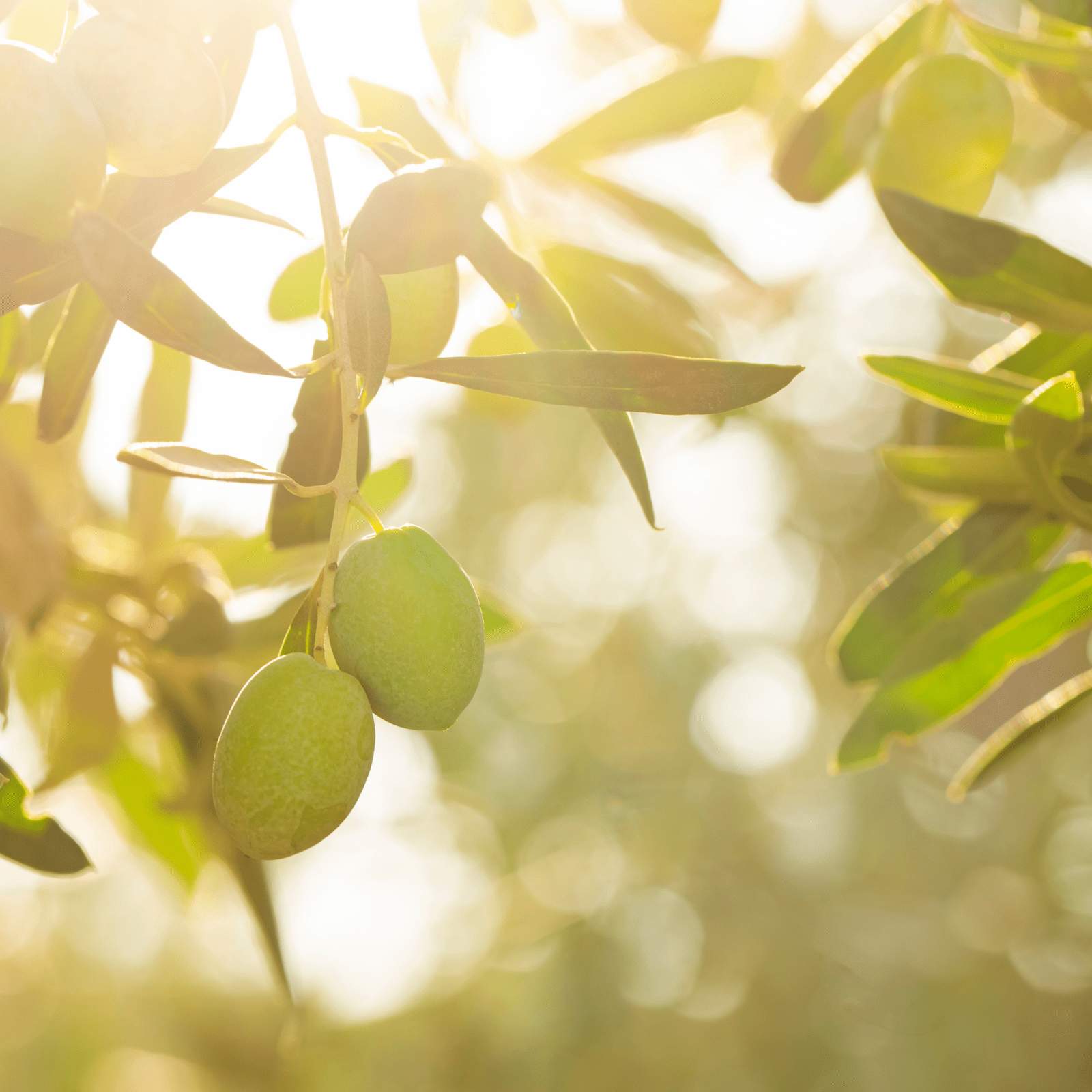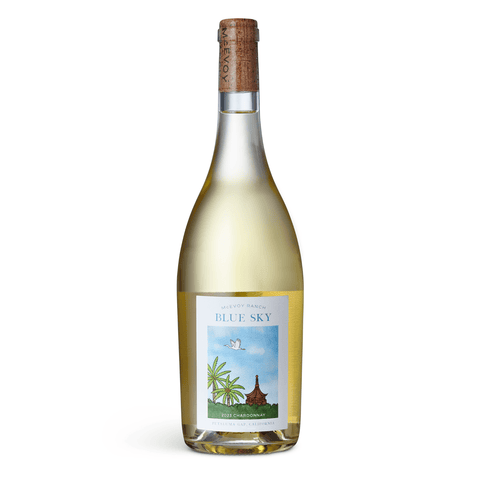
Behind some of the bold and distinctive flavors of extra virgin olive oil lies one of its most powerful ingredients: polyphenols. These naturally occurring compounds not only enhance the oil’s rich, peppery flavor but are also key contributors to the health benefits for which olive oil is renowned.
At McEvoy Ranch, nestled on our 550-acre farm in California, we cultivate olives to produce an oil rich in polyphenols, ensuring that every bottle offers the highest quality and health benefits, along with an exceptional culinary experience.
In this article we will explore what is considered a high polyphenol count, how that impacts its health benefits and taste.
Key Takeaways:
-
Reported polyphenol levels in olive oil can range from 50 to over 1,000 ppm—or even higher depending on the method used for analysis.
-
Extra virgin olive oil boasts the highest polyphenol content.
-
Freshness is paramount, as polyphenol levels are at their peak shortly after production.
-
Factors such as olive variety, harvest time, and production methods directly influence polyphenol levels.
-
A peppery finish and bitterness indicates a higher phenolic content, signaling potentially greater health benefits.
What is the Polyphenol Count in Extra Virgin Olive Oil?
Extra virgin olive oil (EVOO) is prized for its naturally high polyphenol content, though the levels can vary significantly—from as low as 50 ppm to well over 1,000 ppm. Certain methods of analysis can result in even higher numbers, so it is difficult to make comparisons.
The polyphenol count in an olive oil depends on factors such as the harvest timing, the olive variety, and the methods used to create the oil. High-quality EVOOs typically contain more than 250 mg/kg of polyphenols, and some oils exceed this amount.
It is essential to note that polyphenol levels can fluctuate from year to year, influenced by environmental factors and storage conditions. For those seeking the health benefits associated with polyphenols, oils with higher bitter and peppery flavors will generally have higher polyphenol content.
What is Considered a High Polyphenol Count?
Olive oils with high polyphenol levels are especially revered for their health-promoting properties. According to EU regulation 432/12, an olive oil can be classified as “high polyphenol” if it contains at least 250 mg/kg of these beneficial compounds.
It is important to note that extraordinarily high polyphenol levels are not necessary to reap the health benefits of extra virgin olive oil. All olive oil is healthy because of the good fats it contains, and extra virgin olive oil is the healthiest of the lot thanks to the polyphenols and other minor components.
Polyphenol Levels Over 300 mg/kg
Olive oils with more than 300 mg/kg of polyphenols are sought after by some people for their health benefits. These oils are rich in key polyphenols such as hydroxytyrosol, oleocanthal, and oleuropein, which contribute to both their health benefits and distinctive flavor. Early harvests, along with specific olive varieties like Mission, Coratina, Picual, and Koroneiki, are known to yield oils with elevated polyphenol levels.
How Much is Necessary for Health Benefits?
For optimal health, incorporating 1-2 tablespoons of high-polyphenol olive oil into your daily diet is recommended. Research has shown the following health benefits:
-
Heart disease: Consuming 4 tablespoons (60 ml) of olive oil daily can reduce the risk by up to 30%.
-
Diabetes: Regular consumption can lower diabetes risk by 50-80%.
Look for oils that provide at least 5 mg of hydroxytyrosol per 20g of oil for the best health outcomes, the level cited in the EU polyphenol health claim for olive oil.
How to Check the Polyphenol Count Before Buying
Identifying the polyphenol count in olive oil can be challenging without the right information. Some producers now provide polyphenol content on their labels, but these values will be the polyphenol level at the time of testing, not necessarily at the time you consume the oil. Polyphenol content goes down over time. In addition to reading labels, researching specific brands and their production methods can offer insights into the quality and health potential of the oil.
-
Reading Labels
Look for bottles that indicate “robust” flavor. Polyphenols contribute peppery, bitter, and astringent notes, so look for olive oils with more of these characteristics. Specific information about polyphenol content can sometimes be found on company websites.
Oils harvested early tend to contain higher polyphenol levels, and packaging in dark bottles, cans or other light-protective packaging helps preserve these antioxidants.
Select extra virgin olive oils made from olive varieties with higher polyphenol levels such as Coratina, Picual, Koroneiki, Mission, Moraiolo, Chetoui, and Picholine.
The Relationship Between Taste and Polyphenol Levels
Polyphenols are part of the taste profile of extra virgin olive oil, contributing to its characteristic bitterness, pepperiness or pungency, and complexity. These natural compounds enhance the oil’s sensory qualities and are a hallmark of some extra virgin olive oils.
Oils rich in polyphenols often have a bold flavor, with bitterness from oleuropein and a peppery sensation from oleocanthal, making them perfect for elevating both simple and sophisticated dishes.
Tasting Notes of Polyphenol-Rich Olive Oils
High-polyphenol olive oils boast a diverse range of flavors, from herbaceous and green to fruity and nutty. Since earlier harvest oils are more likely to have higher polyphenol levels, these oils will often have dominant green and vegetal notes. To fully appreciate the nuances of these oils:
-
Pour a small amount into a cup.
-
Warm the oil gently in your hands by holding onto the cup with both hands.
-
Inhale its aromas.
-
Take a slow sip, allowing the oil to coat your palate before swallowing.
-
Take a moment to enjoy the flavors of the oil. Does it taste fresh? Does it taste fruity? Bitter? Pungent? Green and grassy or mild and floral?
High Polyphenol Olive Oils vs. Regular Olive Oils
High-polyphenol extra virgin olive oils stand apart from regular olive oils due to their superior concentration of antioxidants. These oils are prized not only for their health benefits, which include reducing inflammation, improving heart health, and protecting against cognitive decline, but also for their depth of flavor.
The peppery kick of a high-polyphenol oil enhances any dish, making it a worthwhile investment for both health-conscious and culinary-focused consumers.
Is it Worth Paying More for Polyphenol-Rich Oils?
Although high-polyphenol oils tend to be more expensive, they offer some advantages that justify the cost:
-
Longer shelf life: The concentrated antioxidants can help preserve the oil, extending its usability over time.
-
Potential for superior health benefits: These oils are packed with antioxidants that provide anti-inflammatory properties and support heart and brain health.
-
Exceptional flavor: Their bold, peppery taste can elevate everyday meals into extraordinary culinary experiences.
-
Culinary versatility: Ideal for both simple dishes and gourmet creations, making them a worthwhile investment for food enthusiasts.
Final Thoughts
Understanding polyphenol counts in olive oil is helpful for making informed choices that benefit both your health and your culinary endeavors. High-quality extra virgin olive oils with polyphenol levels above 250-300 mg/kg offer a unique combination of rich flavor and potent health benefits, helping to reduce inflammation, lower blood pressure, and boost brain function.
When selecting olive oil, consider the harvest date, production methods, and taste profile. Extra virgin olive oil, particularly from early harvests and specific olive varieties, will be the best choice for those seeking high polyphenol content. Though these oils may come with a higher price tag, their health benefits, superior taste, and longevity can make them a worthwhile investment.
Through choosing polyphenol-rich olive oils, you are not only enhancing your meals but also supporting your overall well-being.
FAQ
What is the polyphenol count in extra virgin olive oil?
Extra virgin olive oil usually has the most polyphenols. The amount depends on the oil's freshness, harvest time, olive varieties and processing. Some EVOOs have over 250 mg/kg of polyphenols, sometimes even double or triple that amount.
How much polyphenol intake is necessary for health benefits?
All olive oil is healthy and EVOO is the healthiest option. Aim for 1-2 tablespoons of EVOO every day. Research shows 4 tablespoons daily can cut heart disease risk by 30%. The EU health claim says 20g of olive oil with at least 5mg of hydroxytyrosol and its derivatives is beneficial in protecting blood lipids from oxidative stress.
How can I check the polyphenol count before buying olive oil?
Check for "robust” flavor, “early harvest” and high-polyphenol varieties such as Coratina, Picual, Koroneiki, Mission, Moraiolo, Chetoui, and Picholine. Trustworthy brands can share third-party lab test results. You can find polyphenol test results for some olive oils on their websites but remember that lab tests only show the polyphenol levels at the time of testing.
How do polyphenols affect the taste of olive oil?
Polyphenols greatly affect olive oil's taste. More polyphenols mean more bitterness and spiciness. Oleocanthal gives a peppery feel, while oleuropein adds bitterness. Look for smells of herbs, grass, and veggies to help spot polyphenols.
Is it worth paying more for high polyphenol olive oils?
High polyphenol olive oils may have superior health benefits, but there is no evidence that very high polyphenol levels are always better. They have more antioxidants, which may lower heart disease, cancer, and cognitive decline risks. They also resist oxidation in cooking and last longer because of the antioxidants. Even though they cost more, their health and taste benefits make them a good choice for those who care about health and cooking.
Is polyphenol content an indicator of quality olive oil?
Not necessarily. An olive oil can have a high polyphenol content but still be of lower quality because of sensory defects or not meeting the laboratory parameters for extra virgin classification.
Certified Organic
By CCOF
Sustainably Produced
At Our Ranch
Early Harvested
High Polyphenols
Award Winning
Extra Virgin Olive Oil






